Table of Contents
Trying ice baths for weight loss is a popular trend on the internet nowadays. Have you ever wondered if taking an ice bath to lose weight could be the missing piece in your fitness puzzle?
This article will unravel the science and myths behind this frosty phenomenon. From understanding how cold therapy kickstarts your body into a metabolic frenzy to discovering the surprising health benefits beyond shedding pounds. Besides, for those contemplating a cold plunge, we also provide some crucial tips and safety advice.
Stay tuned as we chill down the facts and warm up the debate around ice baths and their role in weight loss.
Can a cold bath help you lose weight?
While an ice-cold bath for weight loss might sound appealing, it’s crucial to ask: Do ice baths really work compared to traditional methods like diet and exercise?
What is cold therapy?
Before exploring the world of ice baths and weight loss, let’s take a look at cold therapy.
Cold therapy, also known as cryotherapy, involves exposing the body to extremely cold temperatures for therapeutic purposes. It’s like giving your body a refreshing wake-up call (1).
When you expose your body to cold, it has to work harder to maintain its core temperature. This process, known as thermogenesis, can increase your metabolic rate. Essentially, your body burns calories to keep you warm. It’s like turning your body into a calorie-burning furnace (2).
The use of cold for therapeutic purposes isn’t new. Throughout history, from the ancient Roman frigidarium to the Finnish tradition of ice swimming, people have been using cold exposure for health benefits. It’s a time-tested method that has evolved over centuries.
Cold therapy has various forms: ice packs, cold showers, ice baths, and even whole-body cryotherapy chambers. Each method offers a different level of cold exposure, aiming to stimulate your body’s natural healing and metabolic processes.

Ice bath and fat loss: What science says?
Imagine your body as a high-performance engine. Normally, it runs steadily, burning fuel (calories) at a predictable rate. But what happens when you throw it into an unusual environment, like an ice bath? It’s like suddenly driving up a steep hill – your engine has to work harder, burning more fuel.
This is where the science of cold therapy comes into play. Exposing your body to cold temperatures can boost your metabolism, the rate at which you burn calories. Think of it as putting your metabolic engine into overdrive.
Now, here’s the cool part: your body has two types of fat – white fat and brown fat. While white fat stores energy, brown fat burns it to produce heat. This is known as thermogenesis. Studies have shown that cold exposure can activate this brown fat. In one study supported by the US National Institutes of Health, participants exposed to mild cold temperatures for 10 hours a night for a month showed a significant increase in brown fat activity and improved insulin sensitivity (3, 4, 5).
This isn’t just about burning calories at that moment. Regular cold exposure can train your body to use energy more efficiently. Studies suggest that activating your brown fat might be a strategy to treat obesity and diabetes in the long term (6, 7).
Comparison with traditional weight loss methods
Diving into the weight loss world, you might find yourself in a sea of options. Among these, the connection between ice baths and weight loss has emerged in recent years. But how does it stack up against traditional methods like diet and exercise?
While ice baths can give your metabolism a push, the calorie burn might not be as significant as a rigorous gym session or a carefully managed diet.
Traditional weight loss methods have a well-established track record. Those methods include controlled diets, calorie counting, and regular physical exercise. These methods focus on creating a calorie deficit, where you burn more calories than you consume. The science here is straightforward and widely supported (8).
Instead, think of ice baths as a supplement to your weight loss journey, not the main course.
Don’t expect ice baths to be a quick fix to alter body composition overnight. Instead, combining them with a balanced diet and regular exercise offers a more comprehensive and sustainable path to maintaining a healthy body weight in the long run.
So, keep up with your regular fitness routine and healthy eating (avoid processed foods and refined grains), and maybe let the ice baths add that extra cool edge.
Other benefits of cold bath


Don’t be too disappointed to discover that ice baths are not the main star in fat burning. These icy soaks aren’t just about potential weight loss; they’re like a multi-tool for your health. Let’s unpack some cool benefits:
- Improved circulation: Cold baths will first contract your blood vessels. As you warm up, your body will improve the flow and efficiency of blood through your blood vessels. Better circulation means more oxygen and nutrients get delivered throughout your body, keeping everything running smoothly (9).
- Boosted immune system: Regular cold exposure can make your immune system more alert and efficient. Studies suggest that cold therapy can slightly increase the production of white blood cells, your body’s natural defense against invaders (10).
- Enhanced muscle recovery: For athletes and gym enthusiasts, ice baths can be your post-workout best friend. They help reduce muscle soreness and speed up recovery, so you’re ready to hit the gym again sooner and with less ache.
- Mental health benefits: Have you ever felt a rush of exhilaration after a cold shower? That’s your brain thanking you. Cold baths can reduce stress and boost your mood. They train your brain to handle stress better, making you mentally stronger (11).
- Regulated blood sugar: Studies have found that cold exposure can improve insulin sensitivity (12). Better insulin sensitivity means your body can regulate blood sugar levels more efficiently, reducing the risk of diabetes.
Who should not try an ice bath to lose weight?
If you’re thinking about an ice bath for all the potential benefits? Make sure you’re not on the list of people who should avoid ice baths:
- People with heart conditions: If you’ve got heart issues like hypertension or arrhythmias, steer clear. Cold shock can ramp up your heart rate and blood pressure, putting extra strain on your hard-working heart.
- Pregnant women: We’re in the dark about how ice baths might affect pregnancy. It’s wise to sidestep potential risks by sticking to milder temperature changes.
- People with Raynaud’s and severe diabetes: Although ice baths may help you improve your insulin sensitivity, they might also mess with your existing sensitive blood flow. In these cases, the downsides usually outweigh the upsides.
- Children and the elderly: The young and the old react more intensely to cold. Gentler temperature treatments are a safer option for them.
Tips for performing ice-cold baths for weight loss
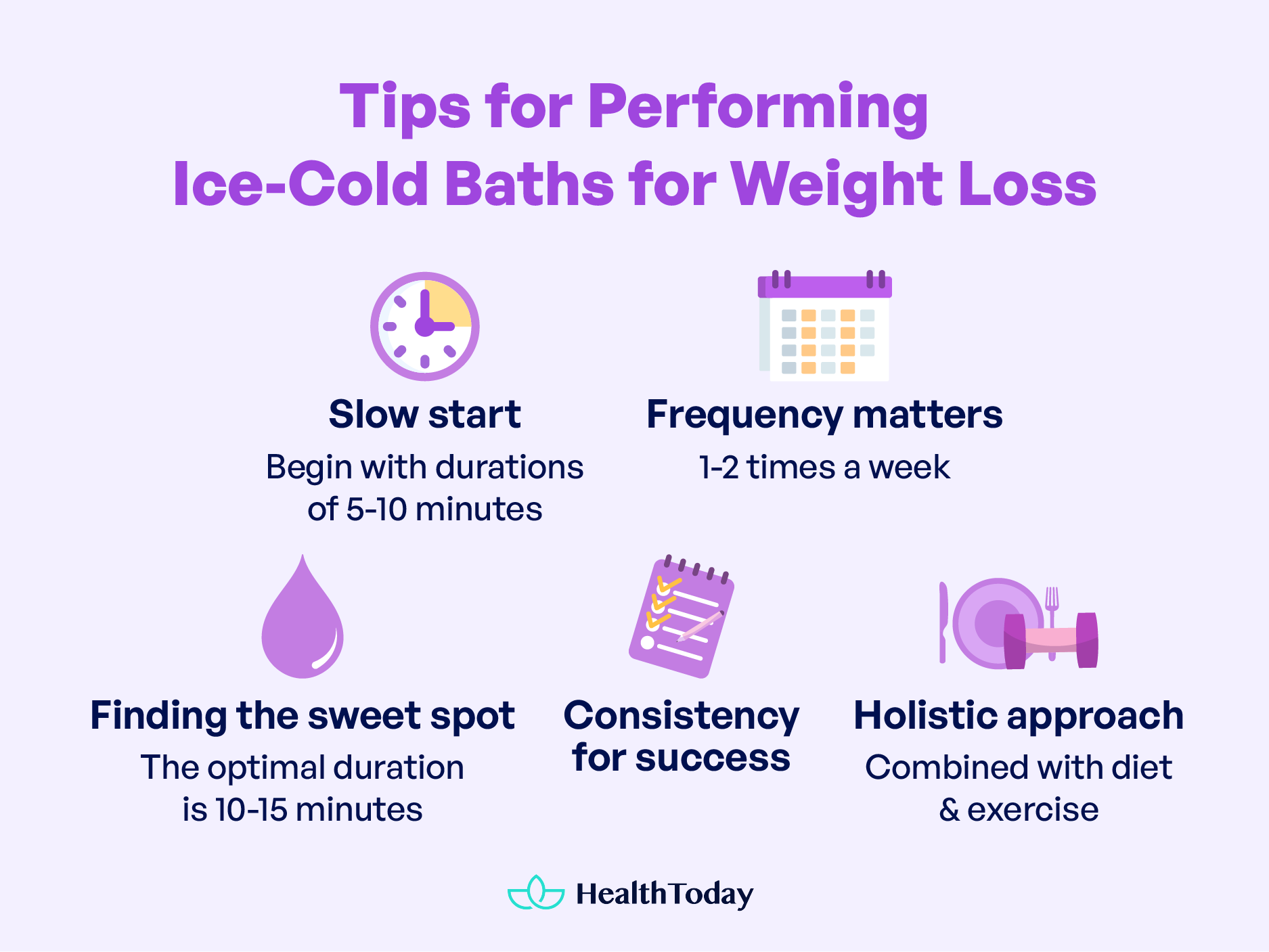

Now you are ready to have some icy dips in your daily routine. To ensure your ice baths are done safely and effectively, let’s expand on some key tips:
- Slow start: For beginners, ice baths should be a short, manageable experience. Begin with durations of 5-10 minutes, then gradually increase to 15-20 minutes. This gradual approach helps your body adapt without shock or discomfort.
- Frequency matters: Start with ice baths 1-2 times a week. This frequency allows for gradual adaptation to the cold without overwhelming the body.
- Finding the sweet spot: The optimal duration for an ice bath is between 10-15 minutes. Staying in for more than 20 minutes isn’t recommended, as it doesn’t necessarily enhance benefits and could pose health risks.
- Consistency for success: Regular ice bath sessions can amplify the benefits. Consistency is more impactful than intensity.
- Holistic approach: Ice baths are not standalone solutions for weight loss. They are most effective when combined with a balanced diet and regular exercise. This holistic approach ensures a healthier, more sustainable path to weight loss.
Precautions to take before, during, and after the ice bath
When considering ice baths for weight loss, it’s crucial to approach them with care:
- Before the bath: Ensure proper hydration, and avoid taking an ice bath immediately after eating. This helps your body prepare for the temperature shock. Also, avoid alcohol or caffeine as they can affect your body’s response to cold.
- During the bath: Monitor your body’s response. If you feel discomfort or pain, it is a sign that you should end the session. It’s essential to listen to your body’s cues for safety.
- After the bath: Gradually warm up. Avoid jumping into a hot shower immediately, as sudden temperature changes can be jarring. Allow your body to adjust back to normal temperatures naturally. After the bath, spend time in a room-temperature environment to help your body return to its normal temperature.



Can a cold bath help you lose weight?
A cold bath can increase metabolic rate slightly, primarily through the activation of brown fat, but this effect is modest compared to traditional methods like diet and exercise. It’s more of an addition than a standalone weight loss solution.
Is a 3-minute ice bath enough?
A 3-minute ice bath can be a brisk, invigorating experience that may offer some benefits, like reducing muscle soreness. However, for metabolic activation, longer exposures are often suggested. Start with what you can handle and gradually increase the duration.
Do ice baths burn brown fat?
Yes, ice baths can stimulate brown fat, which burns calories to generate heat. However, the amount of calories burned through this process is relatively small. It’s more about the chill than the burn.
Are ice baths good for you daily?
Daily ice baths can be intense. While they might be okay for some, they can be too much for others, especially if you have certain health conditions. Listen to your body, and maybe alternate days to give your body time to adjust.
Do ice baths improve skin?
Ice baths can benefit the skin by tightening pores and reducing puffiness, giving a more toned and vibrant appearance. However, don’t expect them to be a fountain of youth; healthy skin also relies on good nutrition, hydration, and skincare.
What is the cheapest way to do an ice bath?
The most cost-effective way is using your bathtub and adding ice. You can buy bags of ice from a store or freeze water in plastic bottles or containers at home. It’s an icy endeavor that doesn’t have to freeze your wallet.
Summary
Now you get some ideas about ice baths for weight loss. Cold therapy, a refreshing wake-up call for the body, increases metabolic rate through thermogenesis, which activates your brown fat and turns your body into a calorie-burning furnace. Ice baths may play a supporting role in weight loss but are best when combined with diet and exercise for holistic, long-term health benefits.
Ice baths are more than just shedding pounds. They also boost circulation, immune response, muscle recovery, and mental health. However, caution is advised for those with specific health conditions. By having these chilly dips into your routine safely and mindfully, you’re not just braving the cold but also embracing a multifaceted approach to wellness.






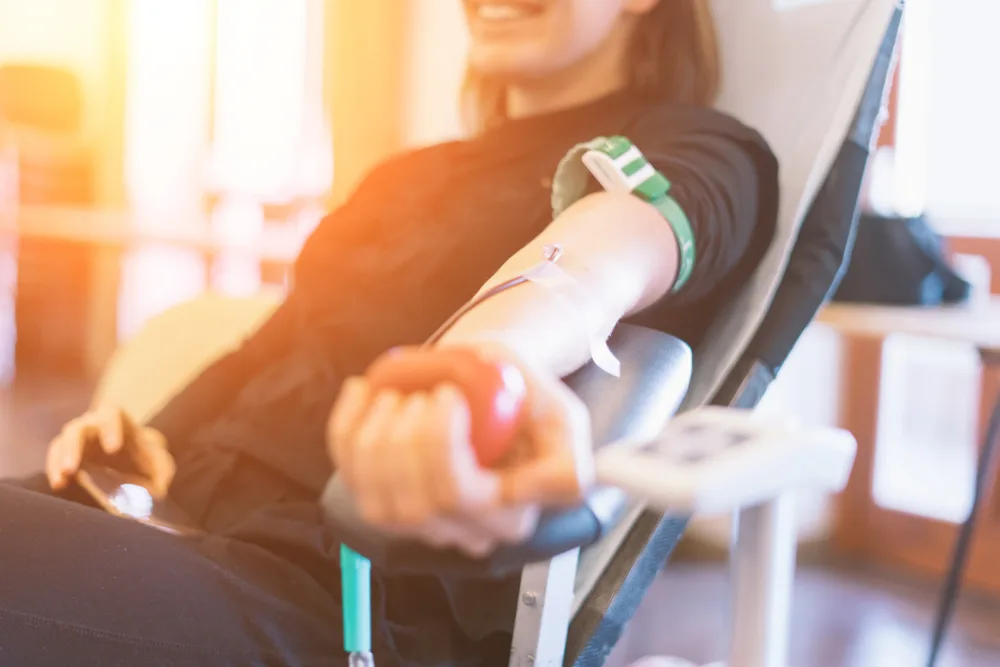



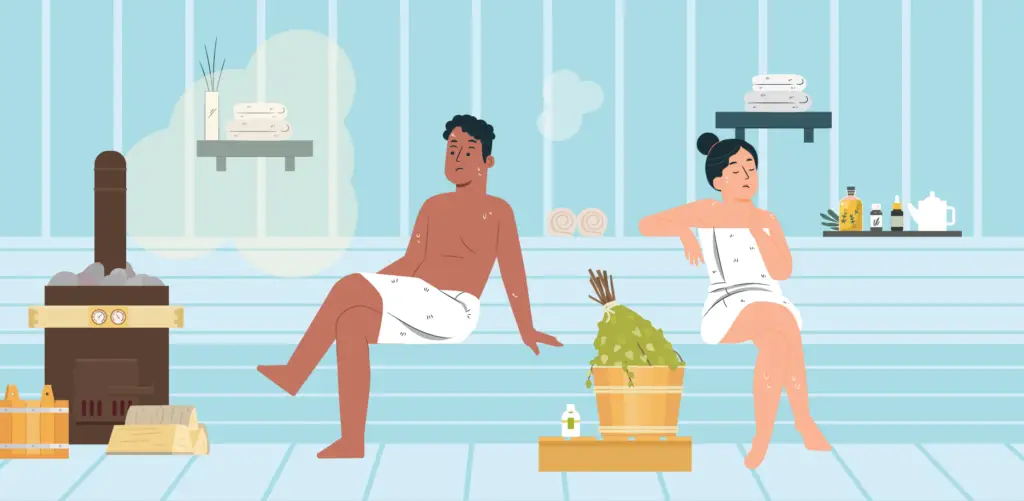
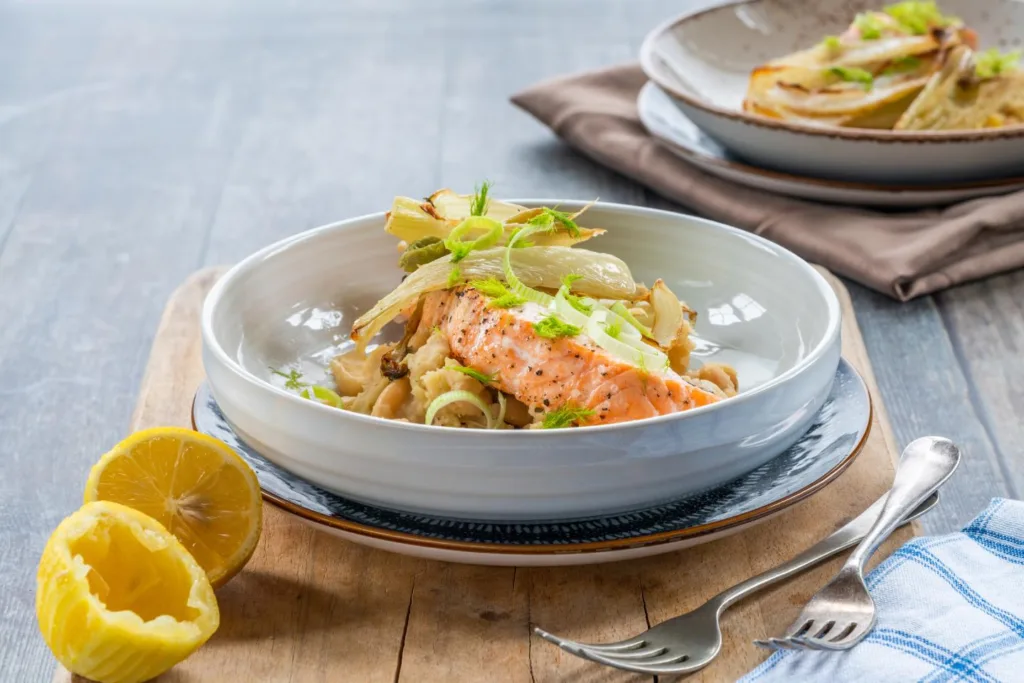



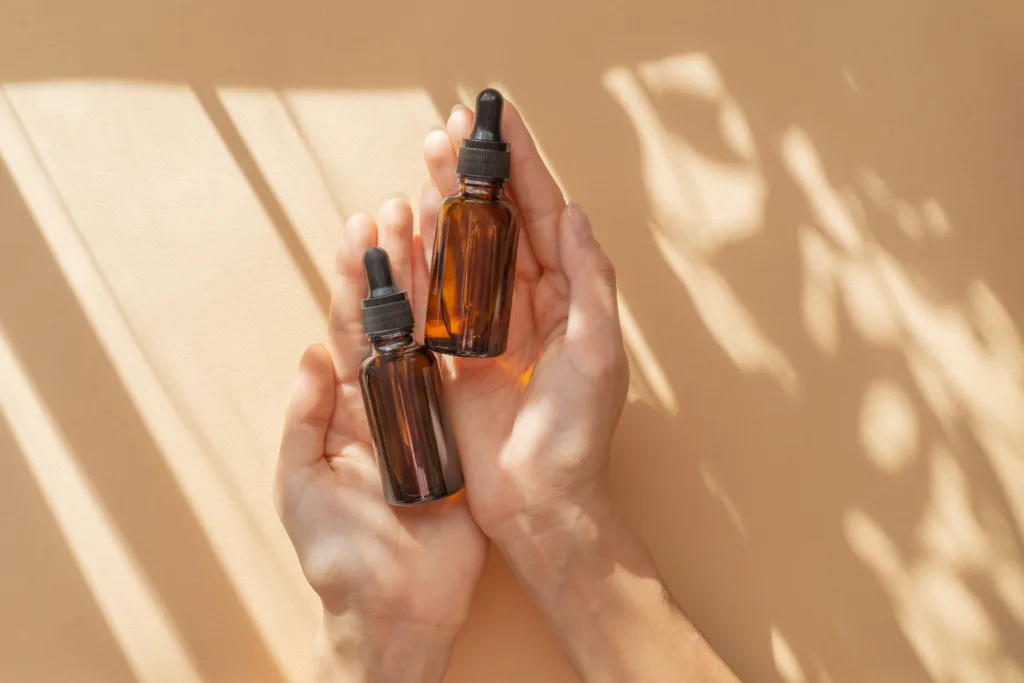

Comments
0